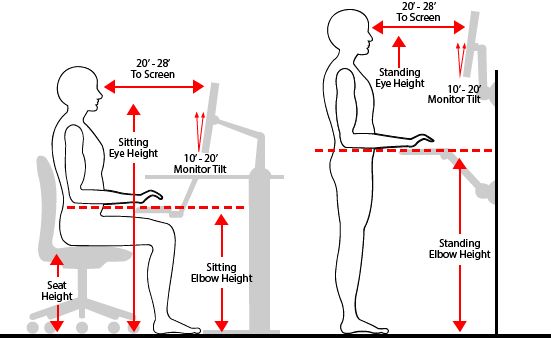Ergonomics and Mental Health: The Connection Between Physical Comfort and Well-being
Ergonomics, the science of designing environments and equipment to fit people's needs, is often associated with physical comfort and preventing ailments like carpal tunnel syndrome or back pain. However, a growing body of research suggests that ergonomics plays a significant role in mental health as well. This article explores the connection between physical comfort and well-being, highlighting how ergonomic practices can positively impact our mental state.
The Impact of Physical Discomfort on Mental Health
When our bodies are in pain or discomfort, it can have a profound effect on our emotional state. Chronic pain, for instance, has been linked to depression, anxiety, and even insomnia. Similarly, poor posture or a poorly designed workspace can lead to physical discomfort, which can in turn contribute to feelings of stress, frustration, and low self-esteem.
The Psychology of Comfort
Comfort is a fundamental human need. When we feel physically comfortable, we are more likely to feel relaxed, safe, and in control. This sense of comfort can have a positive impact on our mental health in several ways:
- Reduced Stress: A comfortable environment can help to reduce stress levels. When we are physically comfortable, we are less likely to experience the physiological symptoms of stress, such as increased heart rate and muscle tension.
- Improved Mood: Physical comfort has been shown to have a positive impact on mood. Studies have found that people who feel physically comfortable are more likely to report feeling happy, satisfied, and optimistic.
- Enhanced Cognitive Function: When we are physically comfortable, we are better able to focus and concentrate. This is because physical discomfort can interfere with our cognitive abilities.
- Improved Sleep: A comfortable sleeping environment is essential for good sleep. Poor sleep, in turn, can have a negative impact on mental health.
Ergonomic Practices for Mental Well-being
Here are some ergonomic practices that can help to improve your mental health:
- Create a comfortable workspace: Ensure that your desk, chair, and other equipment are ergonomically correct. This means that they should be adjusted to fit your body and provide adequate support.
- Take regular breaks: Get up and move around every 20-30 minutes. This will help to reduce muscle tension and improve circulation.
- Practice good posture: Sit up straight and avoid slouching. Good posture can help to prevent pain and discomfort.
- Choose comfortable clothing: Wear clothes that are loose-fitting and comfortable. Avoid tight-fitting clothing that can restrict your movement.
- Get enough sleep: Aim for 7-9 hours of sleep per night. A good night's sleep can help to improve your mood and cognitive function.
- Exercise regularly: Regular exercise can help to reduce stress, improve mood, and boost self-esteem.
- Mindfulness and meditation: Mindfulness and meditation can help to reduce stress and improve mental well-being.
Conclusion
Ergonomics is not just about preventing physical ailments. It is also about promoting mental health and well-being. Creating a comfortable and supportive environment can improve our mood, reduce stress, and enhance our overall quality of life. For more details consult with the ergonomic provider in India!




Comments
Post a Comment